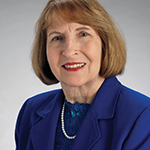Dr. Cannon was severely criticized both inside and outside his institution. A prominent Boston surgeon, Jacob Bigelow, MD, was emphatic in his support for the status quo, namely the apprentice system of training, declaring that surgeons were born and not made. The esteemed chair of medicine at the Johns Hopkins Medical School in Baltimore, Sir William Osler, also opposed Cannon’s inductive method of teaching. He preferred to shower students with his medical knowledge and musings on medical history, a practice aptly described as eminence-based medicine.4
However, Dr. Cannon’s approach prevailed, and over time, the CPC has endured as a fixture in medical education. A case in point is the wonderful and well-attended CPC presentation at the 2014 ACR/ARHP Annual Meeting in Boston, which was given by my dear friend and colleague, Ron Laxer, MD, professor of pediatrics at the University of Toronto, Canada. (Available on SessionSelect: Clinicopathologic conference: A 17-year-old young woman with chronic ankle and back pain.)
The Lecture Hall Has Disappeared
Attracting a sizable and engaged audience to attend an insightful medical lecture should not be a daunting task. If you organize it, they should come. This was clearly evident at our recent Annual Meeting, where attendees were offered a cornucopia of wonderful talks. For example, we witnessed more than 2,400 people cramming into the cavernous main convention hall to hear a series of stimulating lectures at the annual Review Course. Similarly, only standing room was available for latecomers hoping to hear most plenary and state-of-the-art sessions. Clearly, rheumatologists came to learn, to hear new hypotheses and to exchange ideas. And so they packed the lecture halls.
Yet over at our medical schools, the class lecture is moribund if not already dead. Regardless of the school, the topic or the speaker, students stay away in droves. Nowadays, neither the wisdom nor the brilliance of an Osler or a Cannon would likely draw much of a crowd. What is wrong with our medical teaching?
As many of you are aware, most medical school curriculums have recently undergone or are about to undergo substantial redesign. Interactive learning, flipped classrooms and self-study are replacing the traditional large-group lecture, which has been banished (see Rheuminations: “How disruptive technology has transformed the medical school classroom,” September 2013). Its demise could have been predicted when, in their infinite wisdom, most school administrators began distributing slide decks ahead of lectures and videos of the presentations almost immediately following their conclusion. What a wonderful idea! Why ask students to set their alarm clocks every morning and rush off, half asleep, to class when they can sleep in, chill out, read some news online, catch up on Facebook or watch the highlights from last night’s The Daily Show? This may not be what their parents envisioned when they helped pay their latest tuition bill, but does it really matter if they just skip class and fast forward through the video clips instead, pausing at the more interesting parts? This eliminates redundancy, and students can focus on the facts and have time to spend on other activities. A University of Texas Southwestern 2014 Medical School graduate recently described her preclinical years on National Public Radio5:


